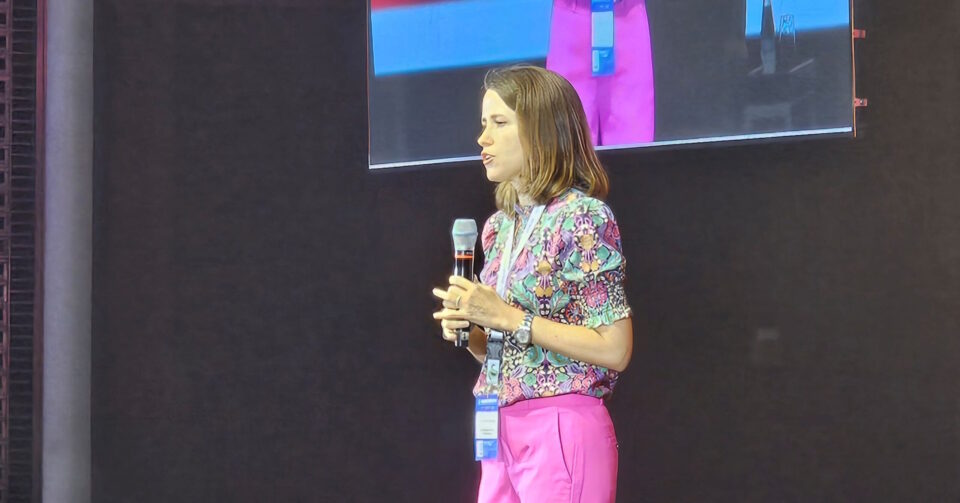Did Elon Musk Just Set Up Twitter’s New CEO for Failure?

A few months after buying Twitter, Elon Musk declared that whoever became the company’s CEO “must like pain a lot” and that he’d step down after finding someone “foolish enough” to want the job.
Although some parts of the world have gone past gender norms and archaic ways—where men are the sole breadwinners, while women remain homemakers—there is still a gender disparity in the workforce today. And on the topic of replacements, statistics on US-based companies have shown that as of 2019, only 22% of all available CEO positions are refilled by women, compared to 78% of CEO replacements who are male.
As for the industry, apparel companies have seen the highest percentage increase in CEO replacements with 67%, while real estate came second at 42%, financial services at 24.5%, and the food industry at 23%.
The worst part? Women are 45% more likely to be fired than males in CEO positions, according to male versus female CEO statistics in 2019. Women are also more likely to get the boot, whether or not the company is performing at a high rate.
How does all this come into play? For one thing, news of Elon Musk stepping down as Twitter’s CEO has gone viral. Even more so the news about his replacement, who will be starting as Twitter’s new CEO in about six weeks.
In this article, we analyze the glass cliff phenomenon and whether Musk is really setting this new leader up for failure.
Twitter’s Change in Command
On May 12, 2023, Musk made the announcement—and on Twitter, no less—that he has hired a new CEO, while he will take on the new role as executive chairman and chief technology officer, where he’ll be focusing on “overseeing product, software, and [system operator] sysops.” And while he didn’t initially reveal who at first, one word stuck out: “she.”
The replacement turned out to be Linda Yaccarino.
Known foremost as the Chairman of Global Advertising and Partnerships at NBCUniversal., Yaccarino’s credentials boast decades of experience in marketing, operations, and content distribution. In fact, her LinkedIn profile describes her role as “the strategic and operational bridge across the entirety of NBCUniversal’s global networks, properties, and business units” as well as “responsible for stewarding and monetizing the company’s industry-leading portfolio of linear networks, digital and streaming platforms, distribution and commerce partnerships, and client relationships.”
But critics say that her tenure as Twitter’s CEO will “depend on her pain tolerance,” as the Twitter leadership position may not be the most coveted one. After all, it cannot be discounted that a few months after buying Twitter on October 27, 2022, Musk has long insisted that he is not the company’s permanent CEO.
Meanwhile, in mid-November, he told a Delaware court that he did not want to be the CEO of any company. “I expect to reduce my time at Twitter and find somebody else to run Twitter over time,” Musk said. And on December, he tweeted: “I will resign as CEO as soon as I find someone foolish enough to take the job.”
The Glass Cliff Phenomenon, Explained
Defined as “a situation in which women are promoted to higher positions during times of crisis or duress, or during a recession when the chance of failure is more likely,” a glass cliff basically means that women in these positions of leadership are set up for failure.
The term was coined in 2005 by professors Michelle Ryan and Alex Haslam from the University of Exeter and throughout the years, there have been plenty of famous examples, like Yahoo’s Marissa Mayer or UK’s Theresa May.
“Promoting women to higher positions often comes with negative implications. and that being set up for failure is the equivalent of standing on the edge of a cliff. If they fail, they fall off,” a report from Investopedia explains.
The thing is, the glass cliff phenomenon occurs in many different fields, including finance, politics, technology, and the like. And whether organizational or situational, this happens for several reasons:
The Woman Leader Becomes the Fall Person
Based on the notion that a struggling company can result in a shorter upper management tenure, the position in itself is risky. By appointing a woman there, the company has someone to blame if she fails in her job—which is pulling the company out of its downward spiral.
“In times of crisis, companies don’t want to risk the loss of who they believe to be their most valuable, high-potential talent—white men. In tough times, they are more likely to sacrifice employees who they perceive as less valued and more dispensable—women and racial minorities,” according to the chief executive officer (CEO) of Pinsight and author Martin Lanik.
While the fate of Twitter cannot be forecasted anytime soon, undeniably, the social media platform has become a debacle in itself. Take for example the many cases of mistaken identity due to the monthly paid service Twitter Blue, a full office shutdown with mass layoffs, along with Musk’s tendency to spread misinformation and engage with prominent conspiracy theorists and far-right figures, which analysts say have soured relations with many advertisers on the platform.
This is what Yaccarino will face once she starts as Twitter’s new CEO.
It Looks Good for the Company
Being gender-inclusive is a sign of a progressive company and even more so by appointing a woman as its leader. And if said woman fails, the company can easily replace her. But if she succeeds, the company does well and can even get credit for appointing the right person for the job.
But here’s the thing—despite the high chance of failure, this glass cliff position can be hard to turn down, given that not a lot of women are given leadership roles. Even more so in the tech industry, which was exactly what happened with Yaccarino’s appointment as Twitter’s new CEO.
What Critics Have to Say: Is Linda Yaccarino Headed for a Glass Cliff?
While the glass cliff theory, in its simplicity, refers to setting a woman leader up for failure as she cleans up the mess made by the company’s male predecessor, a 2011 Harvard Business Review report states that the phenomenon “does not seem to apply to organizations with a history of female leaders.”
And Twitter, like most tech companies, does not have a strong history of female leaders. In fact, its founders were all men—with all five of its CEOs, including Musk, being men, too.
All this raises a question: is Linda Yaccarino headed for a glass cliff? Although the fate of the social media platform cannot be forecasted just yet, as there is a 6-week period before she starts, critics have already weighed in.
“Her credentials are impeccable and she’s been extremely successful so far. But she’s also been in settings where her success was achievable,” says Jo-Ellen Pozner, a business professor at Santa Clara University who studies corporate governance. “I mean no disrespect to her or to diminish her in the least. I just think that this is an impossible situation for basically anybody.”
From the advertiser’s perspective, however, Yaccarino has a good record, as she “oversaw NBCUniversal’s market strategy and advertising revenue for its broadcast, cable, and digital assets, which totaled nearly USD 10 billion [or around PHP 561.36 billion].” Meanwhile, Twitter’s final quarterly revenue as a public company, based on a report in July, just sat at USD 1.17 billion (PHP 95.41 billion).
“She is exactly what Twitter needs to start rebuilding advertiser trust, bring back big advertisers, and really start improving Twitter’s ad business,” says Jasmine Enberg, an analyst at Insider Intelligence who follows Twitter. “That said, there are still a lot of challenges and Yaccarino is going to have her hands full from day one.”
”Elon Musk has been telling us for months repeatedly that Twitter’s problems are the result of advertisers pulling away. But that’s not the source of his problems,” Pozner adds. “Advertisers pulling away are a symptom of the problems at Twitter. He’s created chaos. He’s eliminated internal controls. He’s eliminated critical functions like content moderation. He’s made the user experience very unpredictable. He’s allowed dangerous voices to flourish.”
Twitter Leaders Going Head-to-Head
But even in the early stages, the dynamic between Yaccarino and Musk shows some signs of strain. In a recent on-stage interview with the Tesla billionaire, she asked him if he could commit to not tweeting after 3 AM. And while he admitted having “gotten [himself] in trouble a few times” for these late tweets, he responded with a noncommittal “I will aspire to tweet less at 3 AM.”
Moreover, when asked about his openness to letting advertisers “influence” his vision for Twitter, in “product development, ad safety, content moderation” to get them more excited about investing in the platform, Musk quickly shut her down.
“It’s totally cool to say that you want to have your advertising appear in certain places [on] Twitter and not in other places, but it is not cool to try to say what Twitter will do,” he said. “And if that means losing advertising dollars, we lose it. But freedom of speech is paramount.”
This, of course, will also depend on how much power Musk will hold with the change in position. After all, he will still be Twitter’s executive chairman—Yaccarino’s boss—and its chief technology officer, who will be reporting to her. This duality of roles may cause a confusing power play between the two, especially if they don’t see eye to eye in matters relevant to their respective roles.
“It is really debatable whether or not he’s going to hand the reins over entirely to Yaccarino,” Enberg ends. “And a lot of Twitter’s success from here on out really depends on what he decides in terms of that.”




